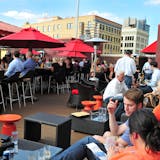Busy raising three children, Denise and Steve Renner hadn’t made many home improvements in the 30 years they lived in their house in White Bear Lake Township.
So, when they were ready for a refresh, they decided to tackle areas used the most and that needed the most updating, including the kitchen, exterior siding and the parlor-cum-office. Overall, they invested about $75,000, which is the amount Denise Renner, 57, hopes to recoup some day.
“We plan to be here and want to enjoy it,” she said. “When we do want to move, the resale value will be huge.”
Since the pandemic, consumers like the Renners have been on a spending spree to make their homes more comfortable and functional. Experts say higher mortgage rates may prompt more people to renovate if they plan to stay in their home longer. Furthermore, older adults tend to live in older units that need more work.
Harvard University’s Joint Center for Housing Studies projected U.S. homeowners and renters would spend a record $580 billion on home remodeling this year. Adults age 55-plus account for more than half of all spending on home improvements, said Abbe Will, senior research associate at the center.
Whether you plan to stay in your home another decade or sell it soon, you may want to consider which improvements bring the biggest bang for the buck before undertaking pricey projects. It’s called return on investment (ROI), which is how much of your initial cost you’ll recover from a higher home value and asking price when you sell it.
The average ROI across all improvements is 60% to 70%, with interior projects usually bringing higher returns than exterior ones. In general, more upscale and extensive renovations and work involving electrical, plumbing or structural engineering, such as moving walls, mean a higher cost and lower return.
Kitchen and bathroom redos always top the ROI list at resale because they’re expensive projects that new homeowners typically don’t want to tackle, said Natasha Cejudoof Lake Sotheby’s International Realty in Minneapolis and a real estate agent for nearly 20 years. Smaller, less expensive improvements, such as new landscaping and painting, also may heighten a home’s curb appeal and have a “magic” effect on ROI, she added.


